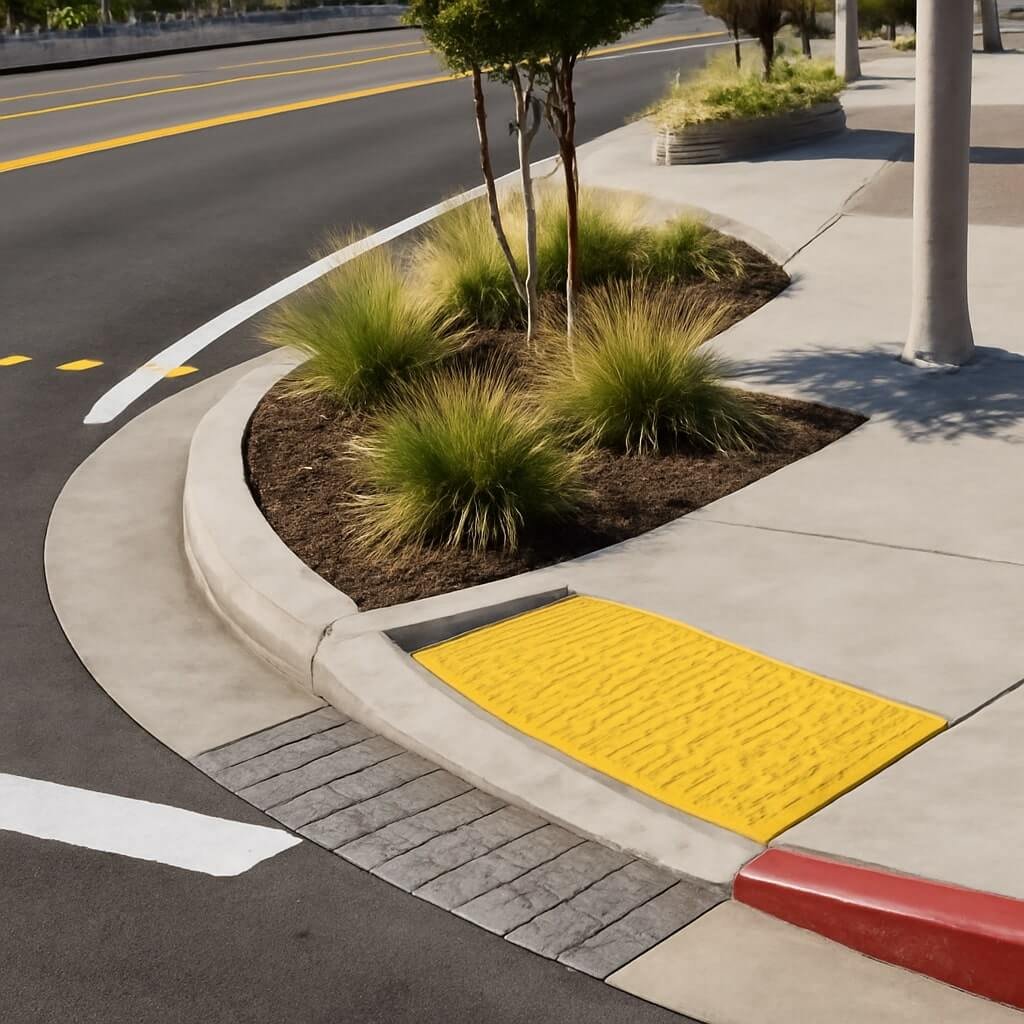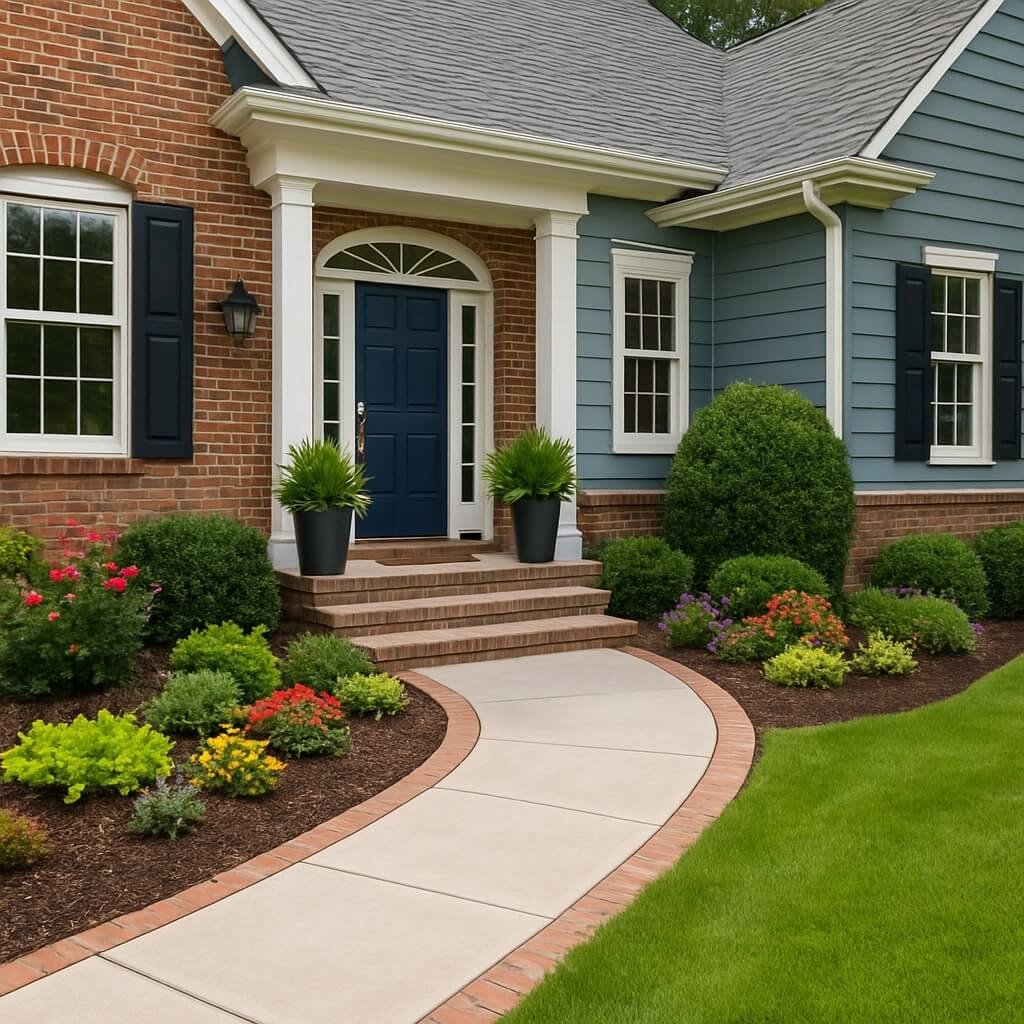Curb improvement techniques are essential for creating safer, more functional, and aesthetically pleasing streetscapes. The curb acts as the interface between pedestrian walkways and vehicle roadways, playing a crucial role in urban safety, accessibility, and environmental management. Upgrading curbs can reduce pedestrian accidents, improve traffic flow, and even help manage stormwater runoff. Cities around the world are recognizing that thoughtful curb design and maintenance contribute to enhanced community wellbeing and urban vitality. For those looking to improve their streets, understanding advanced curb improvement techniques is a fundamental step.
From accessibility compliance to green infrastructure, curbs have evolved from simple concrete barriers to multifaceted urban design tools. Incorporating advanced methods ensures the longevity of these installations and maximizes their contribution to safety, sustainability, and style.
Evaluating Your Current Curb Conditions
Before jumping into curb upgrades, it’s critical to evaluate your current curb conditions. This evaluation helps identify structural weaknesses, material degradation, and functionality issues such as drainage problems or lack of accessibility features.
Key Aspects to Assess:
- Material Integrity: Look for cracks, spalling, or erosion in concrete or asphalt curbs.
- Height and Profile: Ensure curb height matches design standards for your area to accommodate wheelchairs and bicycles.
- Drainage: Check if the curb properly channels water to storm drains to prevent flooding.
- Visibility: Assess reflective paint or markers’ visibility for nighttime safety.
- Pedestrian Access: Confirm presence and condition of curb ramps and tactile paving for people with disabilities.
A thorough inspection lays the foundation for selecting appropriate improvement techniques tailored to your curb’s specific needs.
Incorporating Curb Ramps for Accessibility
One of the most vital curb improvements involves adding or upgrading curb ramps to comply with the Americans with Disabilities Act (ADA) or similar standards globally. Curb ramps facilitate wheelchair access, enhance mobility for people with strollers or bicycles, and generally improve pedestrian flow.
Best Practices for Curb Ramps:
- Ensure ramps have a slope no steeper than 1:12.
- Include tactile warning strips for visually impaired pedestrians.
- Position ramps where a pedestrian crossing is expected.
- Use durable, slip-resistant materials.
Not only do curb ramps promote inclusivity, but they also demonstrate community commitment to equal access—an increasingly important urban design value.
Utilizing Durable Materials for Longevity
Selecting the right materials is crucial for curb durability and maintenance cost reduction. Common materials include:
- Concrete: The industry standard due to its strength and ease of repair.
- Asphalt: Flexible and cost-effective, but less durable long-term.
- Composite Materials: Including recycled plastics and rubber blends offering flexibility and environmental benefits.
- Stamped or Colored Concrete: Adds aesthetic appeal while maintaining durability.
Advances in material science have also introduced polymer-modified concrete and fiber-reinforced options, which resist cracking and weather damage better than traditional materials.
Adding Green Infrastructure to Curbs
Integrating green infrastructure within curbs is a forward-thinking curb improvement technique that addresses environmental challenges.
Examples Include:
- Bioswales: Shallow, landscaped channels along curbs that filter stormwater.
- Rain Gardens: Depressions that capture runoff, reducing pressure on drainage systems.
- Permeable Pavements: Materials allowing water infiltration, reducing urban flooding.
These features not only improve water management but also beautify streetscapes and provide ecological benefits such as habitat creation and air quality improvement.
Enhancing Safety with Reflective Curb Markings
Improving curb visibility is a straightforward yet effective safety measure. Reflective paint and markers increase driver awareness during nighttime or adverse weather conditions.
Reflective Options:
- Thermoplastic Paint: Durable and highly reflective.
- Glass Bead Paint: Affordable and effective for light reflection.
- Embedded Reflective Markers: Raised markers that improve tactile and visual feedback.
Strategically placed reflective curbs help prevent accidents, especially in high pedestrian traffic zones and school areas.
Installing Curb Extensions and Bulb-outs
Curb extensions, also called bulb-outs, extend the sidewalk into the parking lane to shorten pedestrian crossing distances and improve visibility for both pedestrians and drivers.
Benefits:
- Slows down vehicle turning speeds.
- Reduces pedestrian crossing time.
- Creates space for landscaping or street furniture.
This traffic calming technique is popular in urban environments seeking to enhance walkability and safety.
Smart Technology Integration in Curbs
Technology is reshaping urban infrastructure, and curbs are no exception. Smart curb technologies enhance functionality and safety.
Examples Include:
- Sensors: Detect pedestrian presence to trigger lights or signals.
- LED Lighting: Embedded curbs that illuminate crosswalks.
- Smart Parking Systems: Curbs with sensors to monitor parking availability and enforce regulations.
Smart curbs provide dynamic, real-time interaction between streets and users, improving traffic efficiency and safety.
Improving Drainage with Curbs
Proper drainage is essential to curb design to prevent water accumulation and damage.
Techniques Include:
- Grated Inlets: Installed at curb bases to capture runoff.
- Sloped Curbs: Direct water toward drainage points.
- Permeable Edges: Allow water to seep into underlying soils.
Good drainage reduces roadway deterioration, prevents flooding, and improves pedestrian safety.
Creative Aesthetic Upgrades
Curb improvement doesn’t need to be purely functional—adding artistic elements can transform ordinary curbs into landmarks.
Creative Ideas:
- Painted murals or patterns.
- Embedded planters or flower beds.
- Decorative stonework or tile finishes.
These elements enhance neighborhood identity and encourage community pride.
Maintenance Best Practices for Long-lasting Curbs
Sustaining curb improvements requires regular maintenance.
Recommended Practices:
- Schedule periodic inspections for cracks and erosion.
- Clean curbs to prevent debris buildup.
- Repair damaged sections promptly.
- Reapply reflective paint annually.
A proactive maintenance program extends curb lifespan and preserves safety and appearance.
Cost Estimation and Budgeting for Curb Projects
Budgeting for curb improvements involves considering material costs, labor, and ongoing maintenance.
| Item | Estimated Cost Range (per linear foot) |
|---|---|
| Concrete Curb | $15 – $30 |
| Asphalt Curb | $10 – $20 |
| Composite Materials | $20 – $35 |
| Curb Ramp Installation | $500 – $1,000 (per ramp) |
| Reflective Markings | $3 – $7 |
| Green Infrastructure | $25 – $50 |
Allocating funds effectively ensures project success and longevity.
Case Studies: Successful Curb Improvement Projects
- New York City’s Green Curb Initiative: Installation of bioswales and permeable curbs reduced combined sewer overflow by 30%.
- Portland’s Smart Curbs: Sensor-equipped curbs improved pedestrian safety and reduced parking violations by 25%.
- San Francisco’s Painted Curb Art: Creative curb paintings increased local business foot traffic and community engagement.
These cases illustrate the tangible benefits of advanced curb improvement techniques.
Frequently Asked Questions (FAQs)
What is the primary benefit of curb ramps?
Curb ramps ensure accessibility for individuals with disabilities, enhancing pedestrian safety and compliance with legal standards.
How often should curbs be inspected for maintenance?
Ideally, curbs should be inspected at least twice a year and after major weather events.
Can green infrastructure curbs reduce flooding?
Yes, they help manage stormwater by allowing infiltration and reducing runoff volume.
Are reflective curb markings cost-effective?
They are a low-cost safety improvement that significantly enhances visibility.
What are the environmental benefits of permeable curbs?
They reduce runoff pollution, recharge groundwater, and help mitigate urban heat islands.
How do smart curbs improve urban mobility?
By providing real-time data and interactive features, they optimize traffic flow and enhance pedestrian safety.
Conclusion: The Future of Curb Design
The future of curb design is bright, integrating safety, sustainability, technology, and aesthetics. By adopting advanced curb improvement techniques, communities can create safer, more inclusive, and environmentally friendly streetscapes. As cities evolve, curbs will continue to play a pivotal role in shaping urban experiences, making it essential for planners, engineers, and residents to prioritize their thoughtful design and maintenance.




